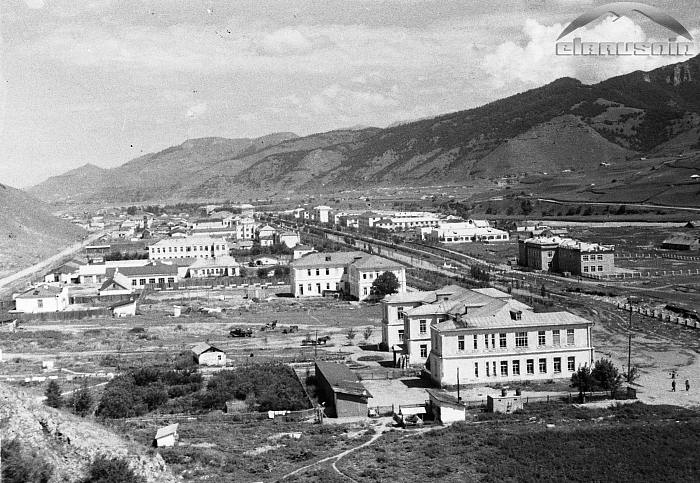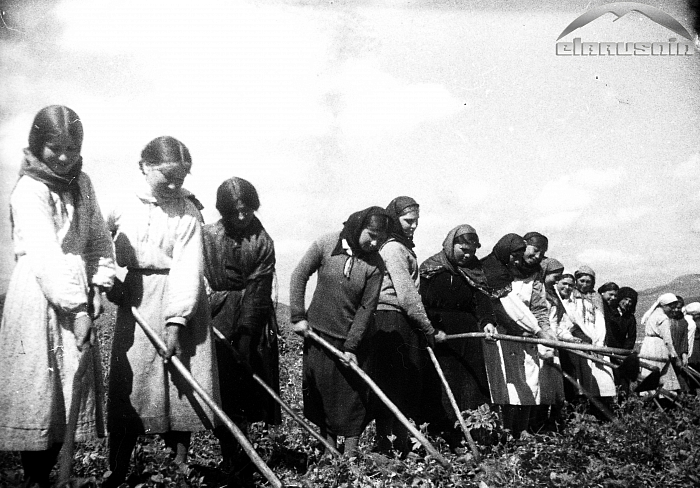The operation to gather all ethnic Balkars for deportation was implemented by Lavrenti Beria of the NKVD (present-day FSB). Joseph Stalin approved it. Beria arrived in Nalchik on 2 March 1944, and the deportation began six days later. The entire Balkar ethnic group, a total of 37,713 individuals, were rounded up and loaded into 14 cattle wagons headed for Kazakhstan and Kyrgyzstan.
Aslan is a 47-year-old man of mixed Balkar and Kabardian ethnicity. He grew up in Nalchik, the capital of the Kabardino-Balkaria Republic and one of the largest cities in the North Caucasus. The Kabardians and Balkars are two separate ethnic groups speaking different languages. While the first was subjected to exile and near obliteration around 1864, the latter was subjected to mass deportations almost 200 years later.
Aslan’s father was among those deported. He was one year old when the secret police came to get his family on 8 March 1944.
– As a baby, my father was deported to Kazakhstan along with his parents and older sisters. The soldiers came to their home early in the morning on 8 March and told them to get ready immediately. Since our family is of mixed ethnicity, my grandmother Gulnaz could have stayed. She was Kabardian. However, she couldn’t lose her husband and children.
Aslan’s surviving family have described the horrific conditions in the wagons.
– My father’s uncle died on the way, and so did his cousin. The family were not allowed to bury them. Instead, the soldiers threw their dead bodies out of the cattle car. My grandmother said there were many dead bodies were thrown off the train in this manner.
Balkars were among the smallest “titular” nationalities in the North Caucasus and, therefore, among the most vulnerable. Over 500 died during the transport to Central Asia, but far more died in the harsh conditions upon arrival. Soviet figures indicate that almost 20% of the entire ethnic group perished in exile.

The Balkar people traditionally inhabit the high Alpine regions of the North Caucasus. They speak a Turkic language and are connected to the many other Turkic peoples of the area. They are closely related to the Karachay people, with some seeing the division of the two ethnic groups as a Soviet construct.
Some of the most beautiful regions of the Caucasus are inhabited by Balkars, including the Elbrus region, which is host to the highest mountain in Europe.
Aslan heard positive stories about how Kazakhs received Balkars during their exile.
– Life was extremely difficult. My family was first placed in a cow shed; later, some barracks were built. They ate roots and leftovers from harvesting. Even today, my father collects the smallest potatoes you can’t even cook. He never leaves a bread crust and eats every part of every fruit or vegetable. The Balkars could easily understand the Kazakhs, as they both speak a Turkic language, and the Kazakhs tried to help as best they could. However, the police tried to prevent such assistance. My grandmother told me how she walked ten kilometres daily to bring water. It was freezing in the winter; one day, she almost reached the house but slipped and spilt all the water. She said her soul had never felt so bitter.
In Central Asia, the Balkars suffered from exhaustion and hunger, with food rations tied to work quotas. After the end of World War II, even ethnic Balkars among Red Army officers were also deported to Central Asia.
After Stalin’s death on 5 March 1953, the Central Committee of the Communist Party overturned the decree stating that all deported peoples – including the Balkars – must remain in permanent exile. Gradually, deported peoples – except Crimean Tatars and Meskhetin Turks – were allowed to return to their homelands. In 1957, the Balkars were allowed to return home.
Still, Aslan says the deportations deeply affected Balkar culture. Out of the initial 37,713 people who were deported to Central Asia, it is estimated that 7600 died.
-It set back the culture of the Balkars for decades. Great poets such as Kaisyn Kuliev, Bella Zumakulova and Zhanakait Zalikhanov tried to bridge this gap with their art. The Balkars are closely related to the Karachays, which is practically one people.
Aslan speaks both the Kabardian and Balkar languages. Although Kazakh, Kyrgyz and Karachay-Balkar are all Turkic languages, the differences are significant. Central Asian and Caucasian cultures and traditions differed significantly, even within the Stalinist mould of the Soviet Union.
Aslan believes the deportations have affected him personally.
– When my family returned from exile, they were extremely poor. My father categorically forbade me to buy expensive toys or clothes when I was little. It used to make me angry, but now I understand. He was constantly afraid of the repetition of the experiences which had made him accustomed to a difficult life from childhood. I remember once, they gave me money for my birthday. I took those five rubles, ran out and bought a football. How he scolded me afterwards!
Just before Russia’s full-scale invasion of Ukraine on 24 February 2022, which has also affected ethnic minorities from the Caucasus, Aslan got an offer to work in the Czech Republic. He still lives and works there. Some day, he wants to do an installation devoted to the history of his people. His identity as Balkar and Kabardian is complex and challenging to understand for outsiders.
– In Nalchik this year, people gathered to remember those who died and suffered 80 years ago. Prayers were read for them. My heart always skips a beat when I hear songs in Balkar, says Aslan.
